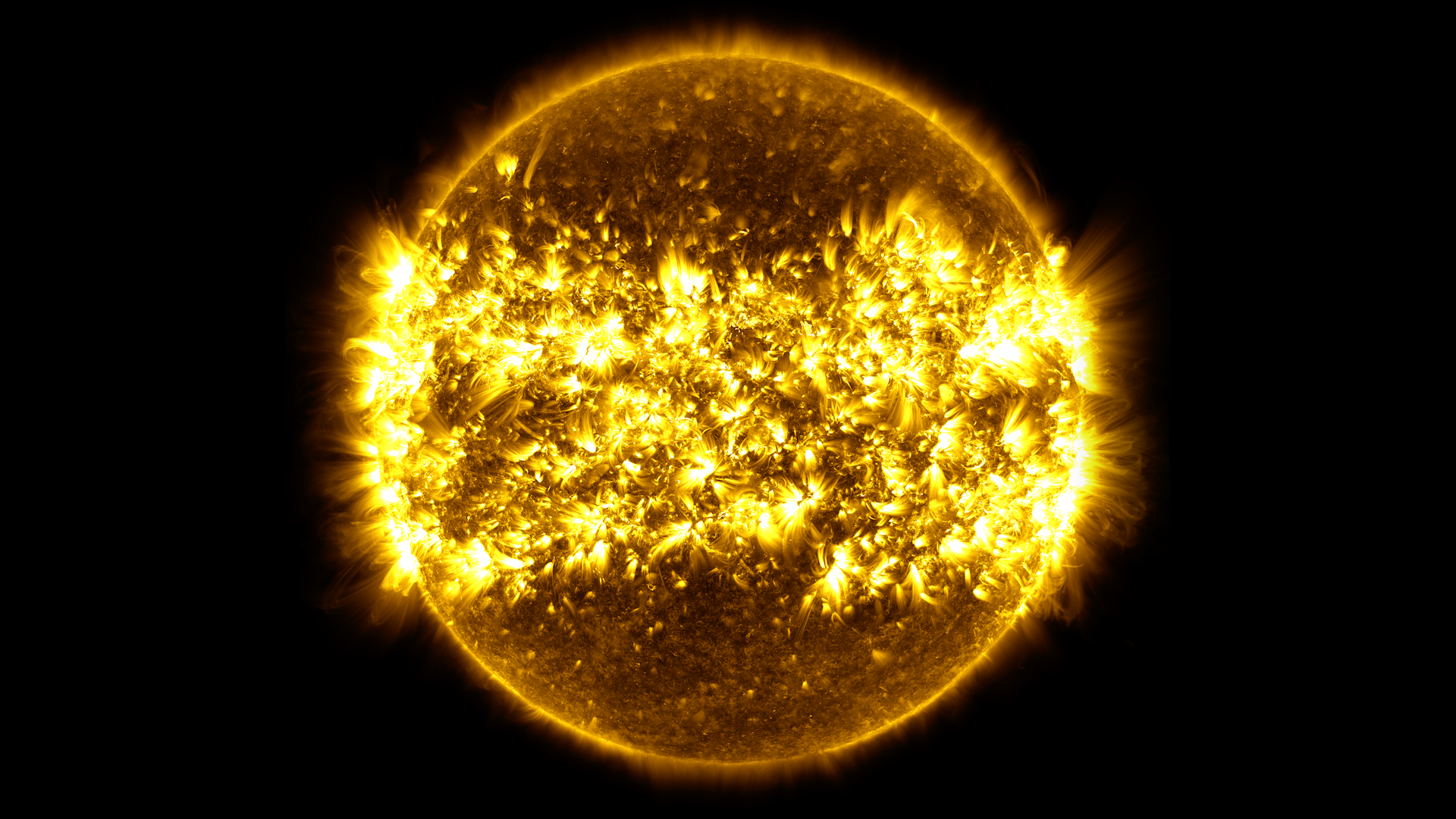Sun Time-lapse

See a year in the life of the sun.
The sun is always changing and NASA's Solar Dynamics Observatory (SDO) is always watching. Launched on Feb. 11, 2010, SDO keeps a 24-hour eye on the entire disk of the sun, with a prime view of the graceful dance of solar material coursing through the sun's atmosphere, the corona. SDO's Atmospheric Imaging Assembly (AIA) captures a shot of the sun every 12 seconds in 10 different wavelengths. Scientists study these images to better understand the complex electromagnetic system causing the constant movement on the sun, which can ultimately have an effect closer to Earth, too: Flares and another type of solar explosion called coronal mass ejections can sometimes disrupt technology in space. Moreover, studying our closest star is one way of learning about other stars in the galaxy. Watch the video to see a time-lapse of the sun covering SDO’s sixth year in orbit.
Explore how the sun changes over the course of a year in this time-lapse video narrated by NASA scientist Nicholeen Viall.

A bridge of suspended solar material, called a solar prominence, extends over the sun's limb in this image taken by SDO.

When a solar prominence erupts in a giant coronal mass ejection, it sends a massive cloud of solar material (above left) into space.

Solar eruptions, such as coronal mass ejections, are often associated with bright areas on the sun called active regions.
Credits
Please give credit for this item to:
NASA's Scientific Visualization Studio
Active region image courtesy of NASA/GSFC/SDO/S. Wiessinger
-
Animator
- Tom Bridgman (Global Science and Technology, Inc.)
-
Producer
- Scott Wiessinger (USRA)
-
Video editor
- Scott Wiessinger (USRA)
-
Writer
- Karen Fox (ADNET Systems, Inc.)
-
Narrator
- Nicholeen Viall (NASA/GSFC)
Release date
This page was originally published on Thursday, February 18, 2016.
This page was last updated on Wednesday, May 3, 2023 at 1:48 PM EDT.
